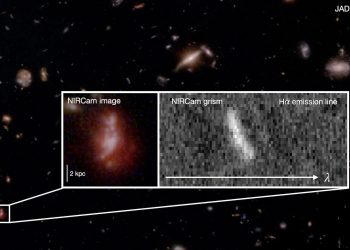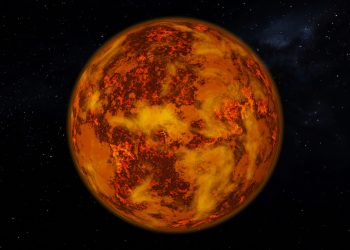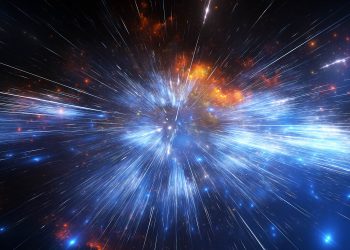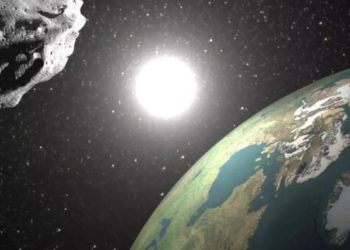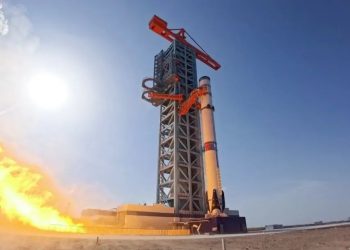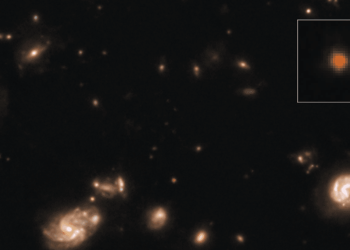The rules of chemistry on Titan, Saturn’s largest moon, may need to be rewritten thanks to a new discovery that shows how frozen crystals of hydrogen cyanide can mix with liquid hydrocarbons, in a combination not previously thought possible.
Experiments at NASA Jet Propulsion Laboratory (JPL) in Southern California, coupled with computer simulations carried out by researchers at Chalmers University of Technology in Sweden, showed how liquid ethane and methane molecules, which fill seas and lakes, Titancan mix with hydrogen cyanide crystals, which are frozen in the moon’s freezing temperature of minus 179 degrees Celsius.
Hydrogen cyanide is what is described as a polar molecule, in the sense that it has one side with a positive electrical charge and another negative side. This means that it prefers to bind to other polar molecules, with opposite charges that attract each other.
On the other hand, methane and ethane, which are both hydrocarbon compounds (that is, formed from hydrogen and carbon atoms), are nonpolar molecules, meaning that their electrical charge is symmetrical, with positive and negative charges on either side of their molecular structure.
Usually polar and non-polar substances do not mix. It’s a bit like the oil remaining separated from the water.
Hydrogen cyanide forms in Titan’s atmosphere via reactions with ultraviolet light from sunwhich breaks down hydrocarbons and reforms them like other molecules. Because nonpolar hydrocarbons are common in Titan’s atmosphere and surface, JPL scientists wanted to know what happened to hydrogen cyanide after it was created. Yet their laboratory experiments mixing hydrogen cyanide with methane and ethane, carried out at a temperature of minus 292 degrees Fahrenheit (minus 180 degrees Celsius), produced surprising results that they did not understand. So they contacted chemist Martin Rahm and his group at Chalmers, who had prior expertise in low-temperature hydrogen cyanide, to search for answers.
“This led to an exciting theoretical and experimental collaboration between Chalmers and NASA,” Rahm said in a statement. statement. “The question we asked ourselves was a bit crazy: Can the measurements be explained by a crystal structure in which methane or ethane is mixed with hydrogen cyanide? This contradicts a rule in chemistry, ‘like dissolves like,’ which basically means that it should not be possible to combine these polar and non-polar substances.”
Rahm’s computer simulations revealed that methane and ethane can penetrate the crystal lattice of frozen hydrogen cyanide, forming a new stable structure called a “co-crystal.”
“This can happen at very low temperatures, like those on Titan,” Rahm explained. “Our calculations predict not only that the unexpected mixtures are stable under Titan conditions, but also light spectra that coincide well with NASA measurements.”
Titan is the only moon of the solar system possess a thick atmosphere and its hydrocarbon chemistry is similar to the prebiotic soup that scientists believe it existed on Earth before life begins. Although the cold temperatures on Titan seem to rule out the types of chemical reactions that could lead to life as we know it, Titan’s atmosphere astrobiological serves as a starting point, presenting what the molecular inventory might have looked like on early Earth. Despite its current toxicity to life, hydrogen cyanide in particular is one of the building blocks of amino acids, used to build proteins and the nucleic bases of RNA and DNA.
“Hydrogen cyanide is found in many places the universefor example in large dust clouds, in planetary atmospheres and in comets“, Rahm said. “The results of our study can help us understand what is happening in other cold environments in space. And we may be able to discover whether other nonpolar molecules can also enter hydrogen cyanide crystals and, if so, what that might mean for the chemistry preceding the emergence of life. »
Regardless, the results suggest even closer interactions between Titan’s atmosphere, its frozen ice dune surface, and its lakes and seas of methane and ethane, than anyone expected. When it arrives on Titan in 2034, NASA’s new rotorcraft, called Dragonflywill make stops at the surface and sample materials including hydrogen cyanide ice, where it can verify the new results and search for even more complex and unexpected chemistry.
The results were published in July in the journal PNAS.



